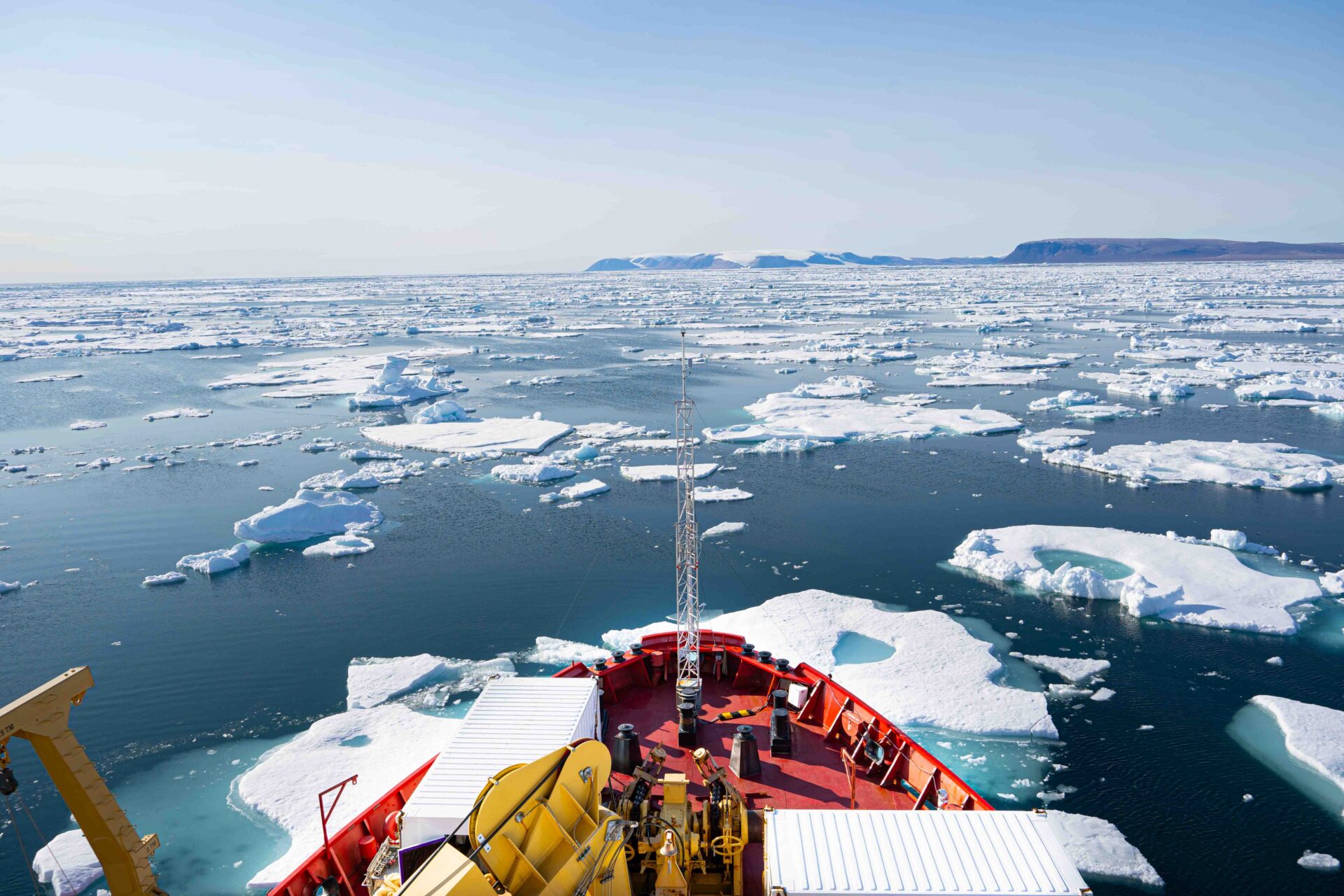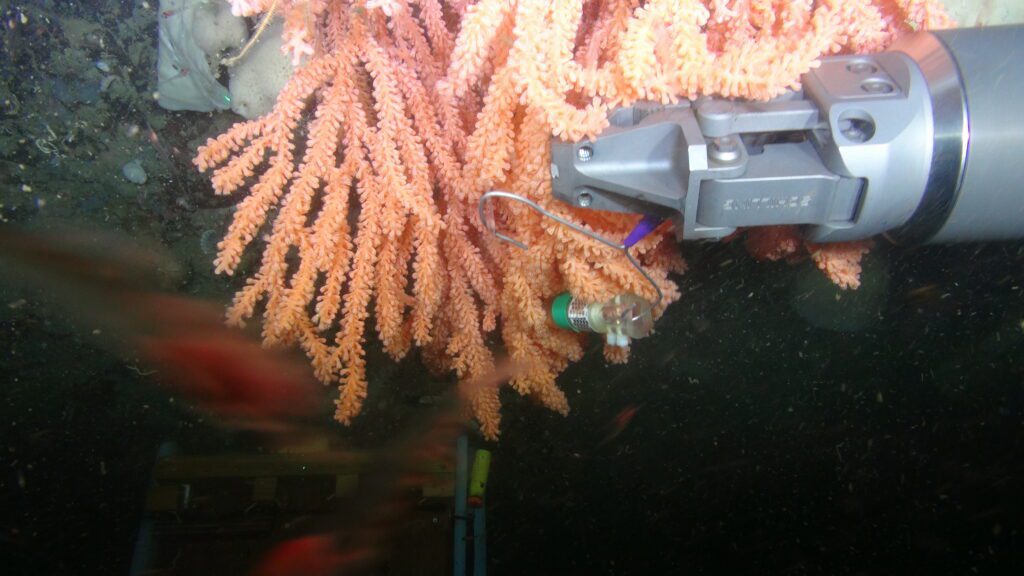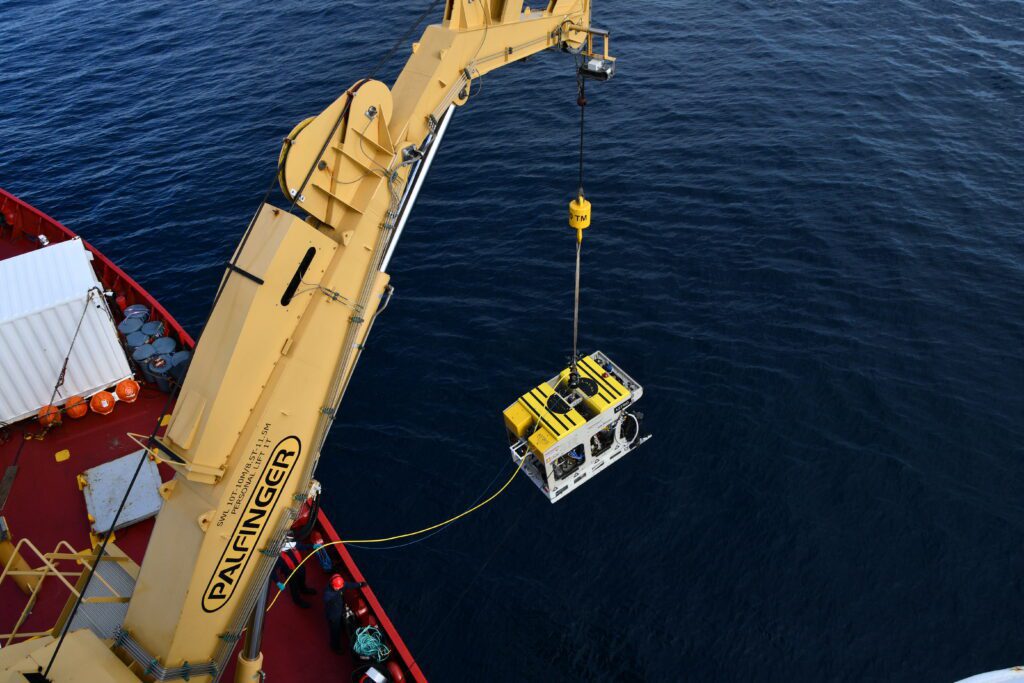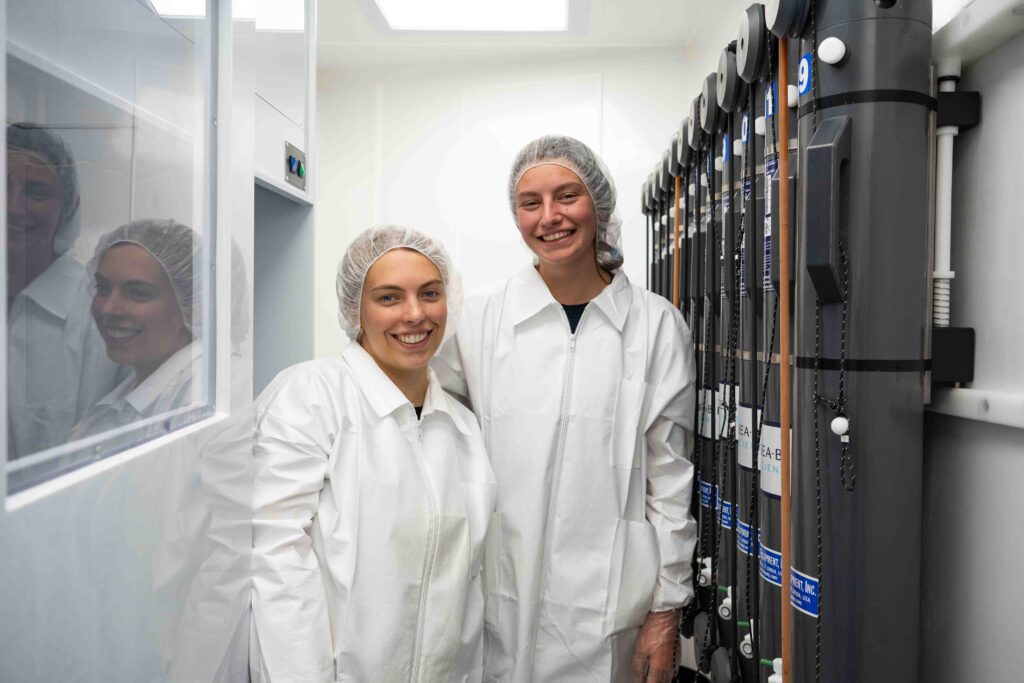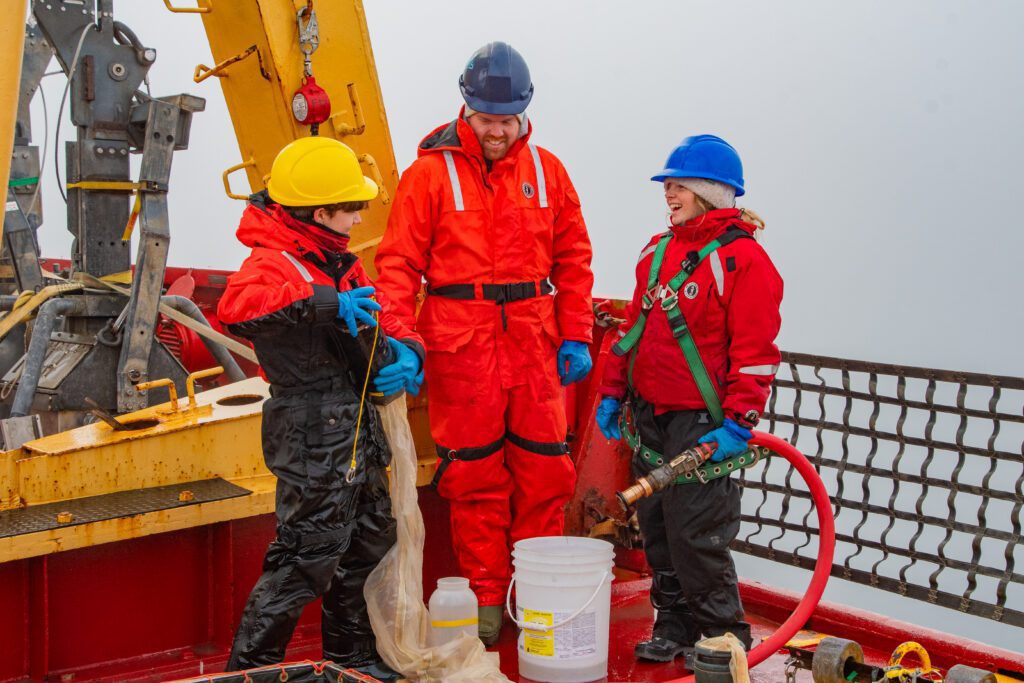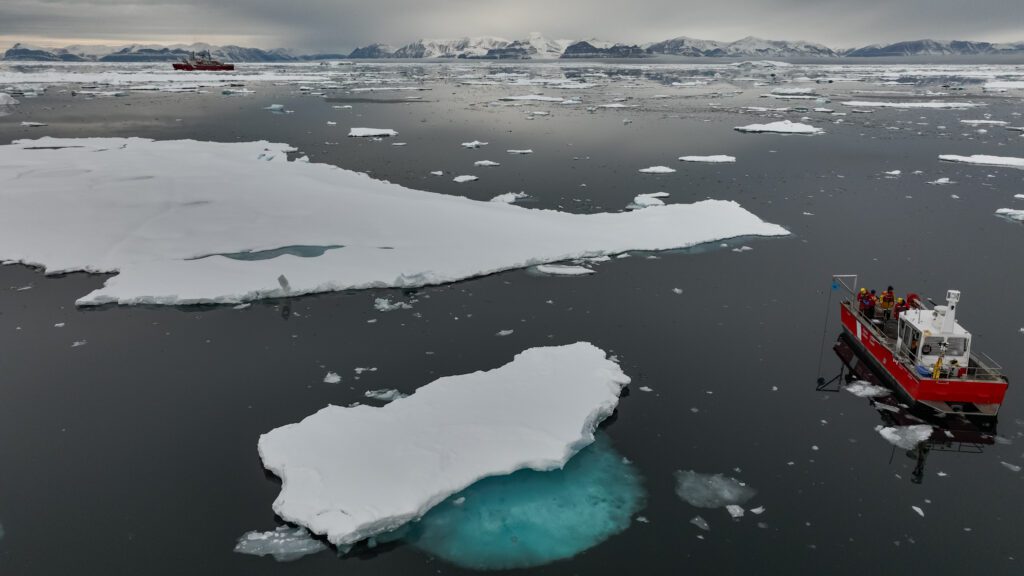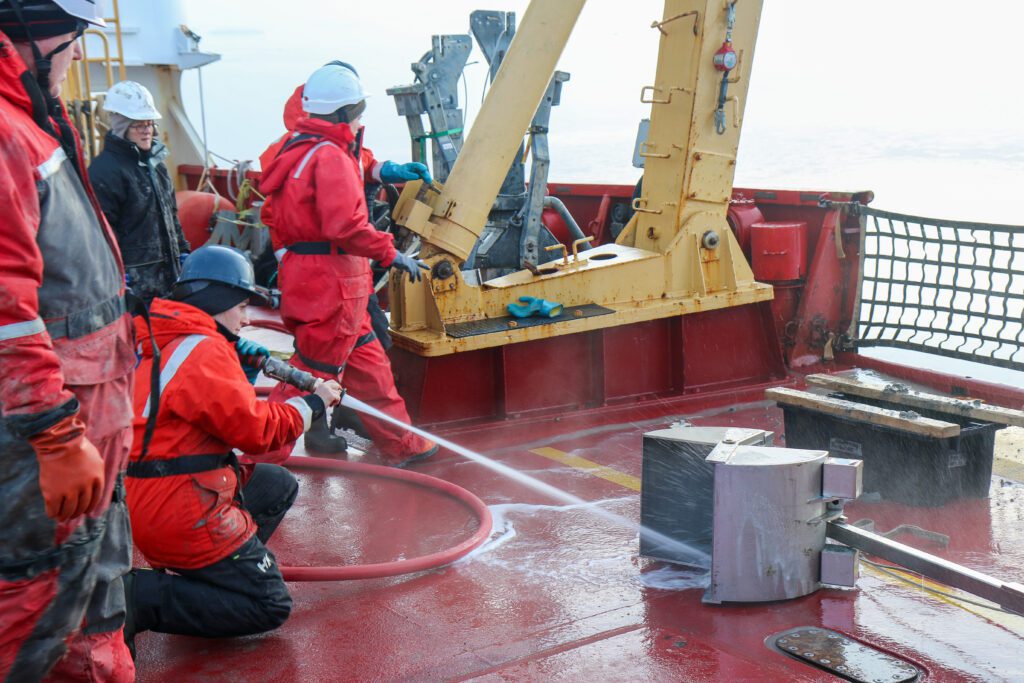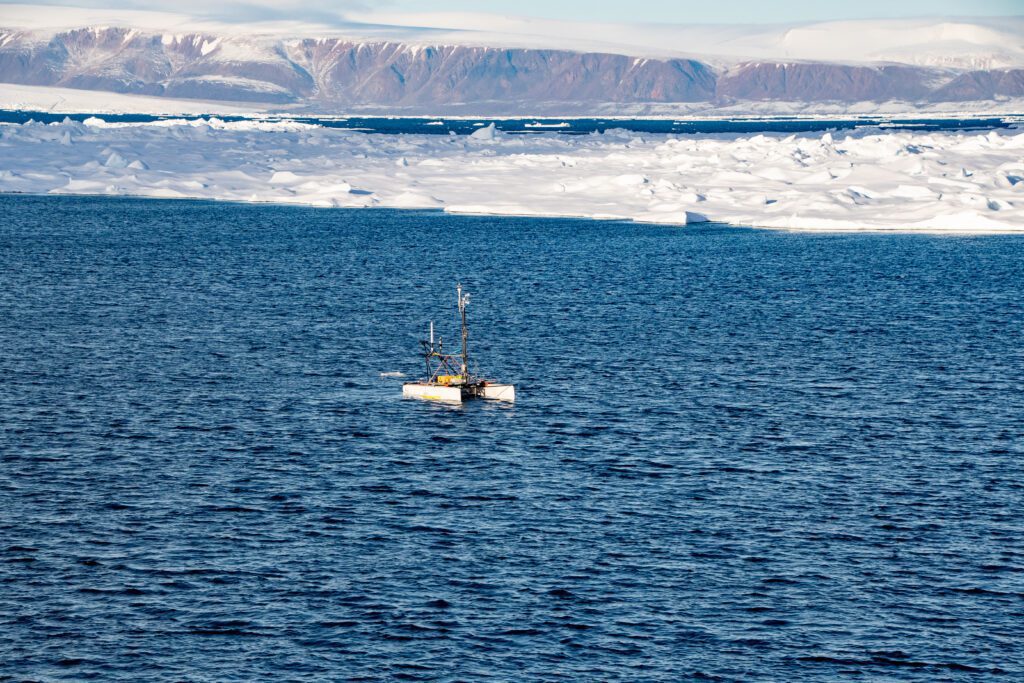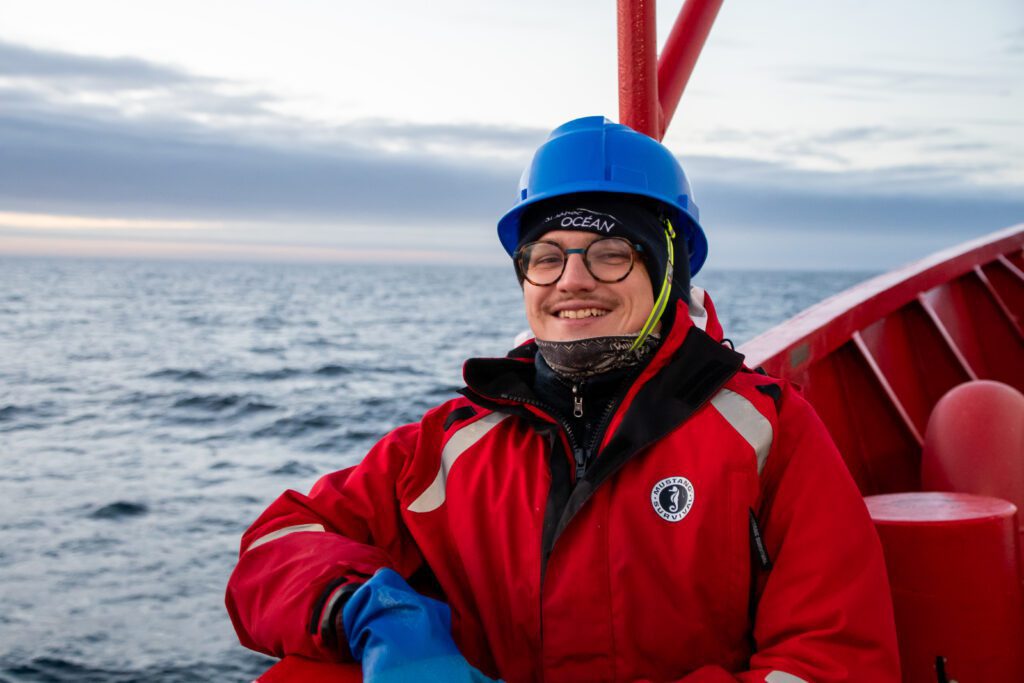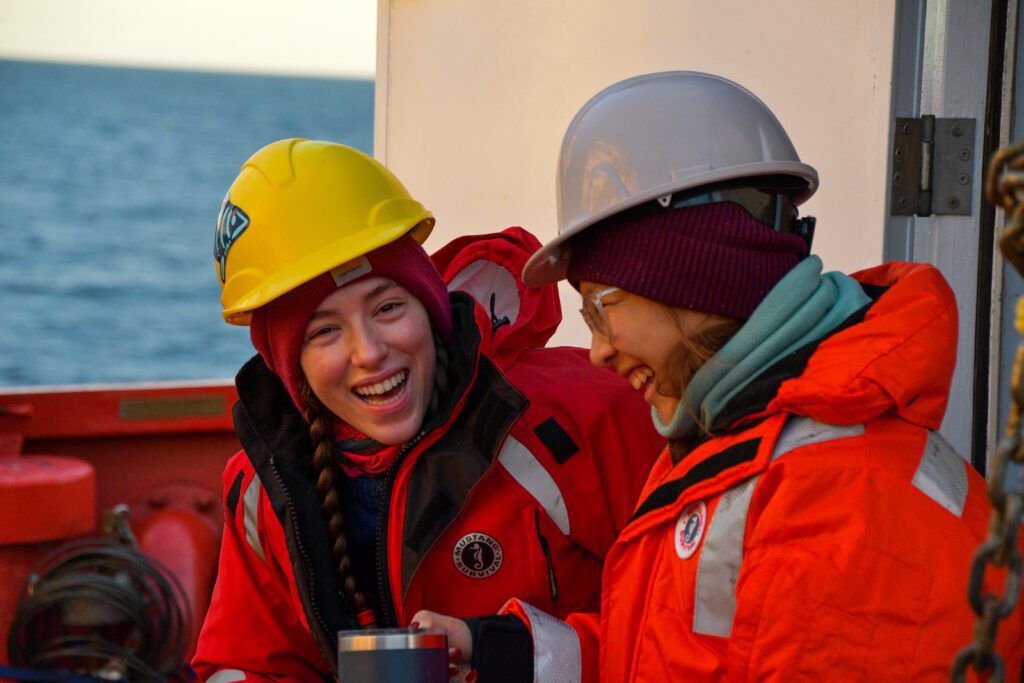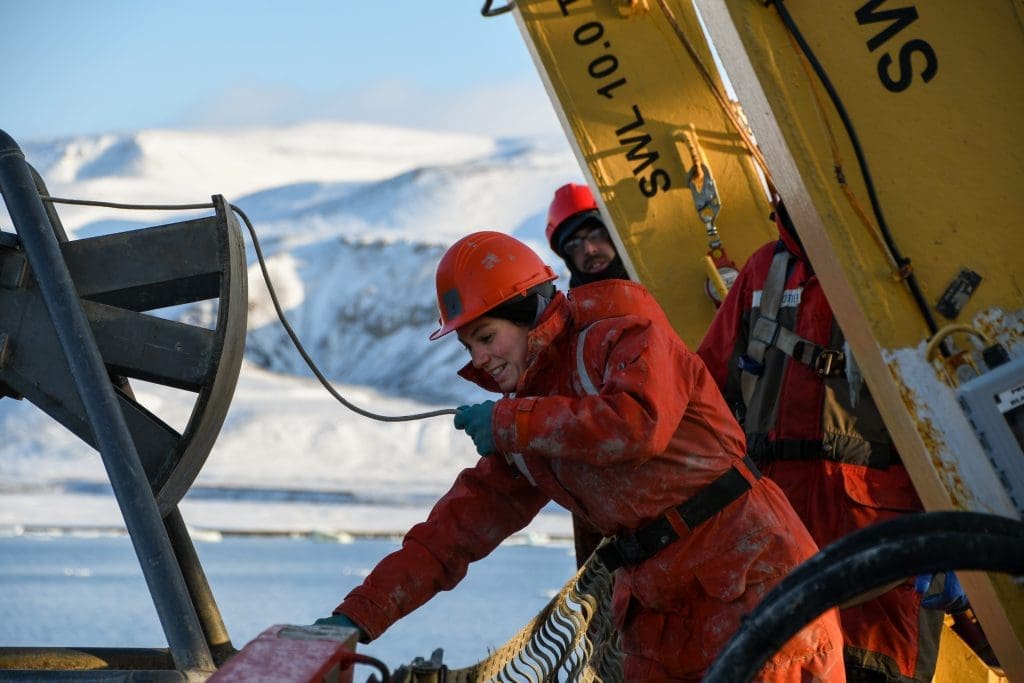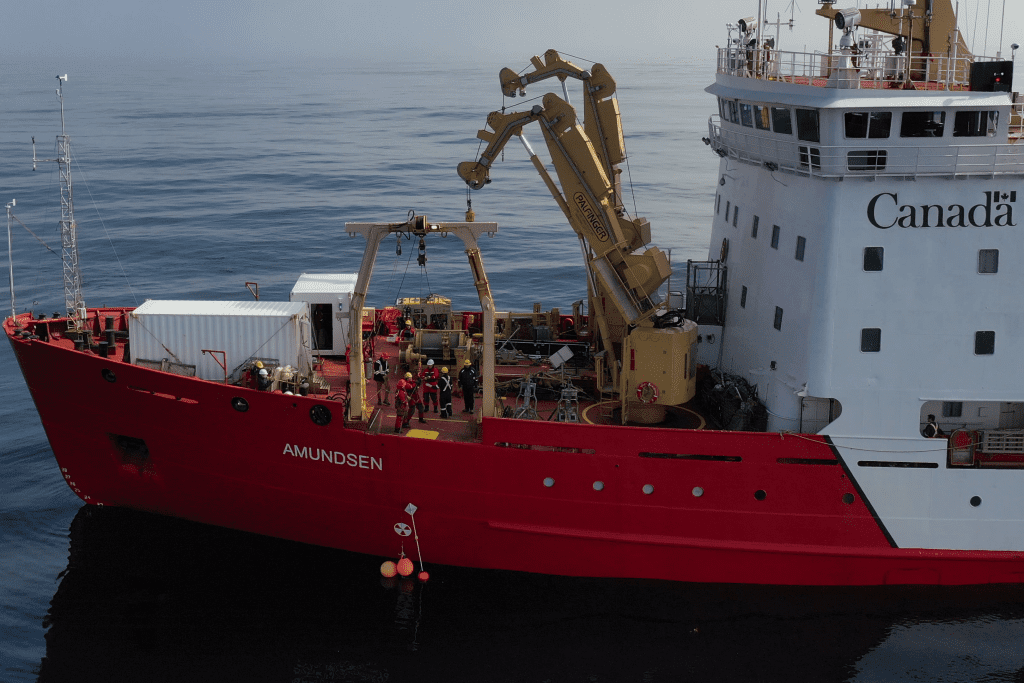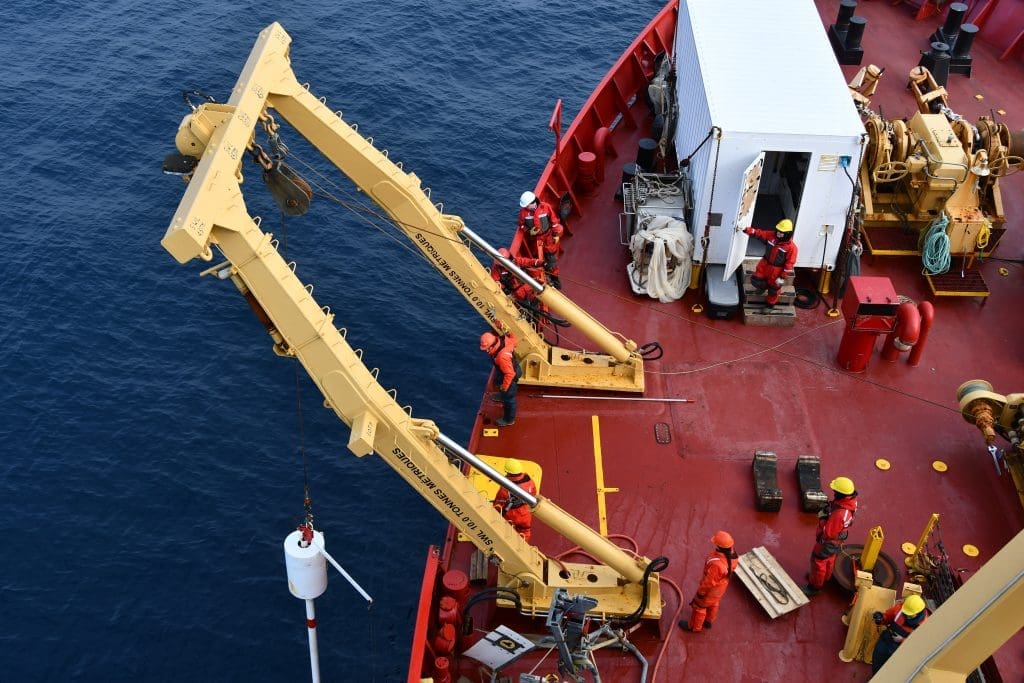
LEG 1 – OPPORTUNISTIC SCIENCE AND CANADIAN COAST GUARD DUTIES
June 14 (Québec City) to July 10 (St. John’s)
This year, the first Leg of the Amundsen Expedition was dedicated to CCG duties in the Labrador Sea. Members of the Amundsen Science team were onboard to maintain the pool of scientific equipment and to conduct opportunistic science operations such as sampling seawater. This Leg ended on July 10th in St. John’s for a short day of scientific mobilization.
LEG2 – IMAPPIVUT, DFO BENTHIC REFUGES, KEBABB AND TCA
July 11 (St. John’s) to July 29 (Qikiqtarjuaq) – July 29 (Qikiqtarjuaq) to August 8 (Iqaluit)
Scientists of the second Leg boarded the Amundsen on July 11th in St. John’s, Newfoundland and Labrador. This Leg was divided in two as it has done a science rotation in Qikiqtarjuaq on July 29th.
The first part of the Leg (a) included the programs Imappivut and DFO Benthic Refuges. Building on last year’s Amundsen Expedition and on previous research and findings, the Imappivut program was built to survey benthic biodiversity in Canada’s northern oceans, sensitive habitats, from coastal environment to deep ocean waters, and the characterization of demersal and pelagic faunal communities. Gathering scientists from Fisheries and Oceans Canada, the Nunatsiavut Government, and other government and academic partners, the Imappivut program aims to understand the distribution of Vulnerable Marine Ecosystems (VMEs) in the Labrador Sea and adjacent areas. The DFO Benthic Refuges program also took place in Leg 2a and it focused on monitoring sensitive benthic areas within the Eastern Arctic Marine Refuges.
The second part of the Leg (b) comprised operations within KEBABB program and Transforming Climate Action (TCA) Research program. These scientific operations mostly took place around Qikiqtarjuaq, in fjords of the region and in Davis Strait. The KEBABB (Knowledge and ecosystem-based approach in Baffin Bay) program, established in 2019, is focused on the development and implementation of an ecosystem-based approach to fisheries management in Baffin Bay. This research fulfilled key knowledge gaps for sustainable harvest and fisheries management in the eastern Arctic. Leg 2 of 2024 Amundsen Expedition then ended on August 8th in Iqaluit.
LEG 3 – ARCTICCORE AND REFUGE-ARCTIC
August 8 (Iqaluit) to September 5 (Pittufik Space Base)
The third Leg of this year’s field season started on August 8th in Iqaluit and ended on September 5th in Pittufik Space Base, Greenland. The 28-day cruise encompassed the Refuge-Arctic program, ArcticCORE program and the recovery of moorings deployed by the Red-AO program in 2023. From the first day of this Leg, the CCGS Amundsen sailed north to visit multiple fjords of Ellesmere Island and shallow waters within the Nares Strait. Refuge-Arctic program aims to better understand ongoing environmental changes in Arctic “refuges” regions, where ice will remain the longest, preserving biodiversity and biogeochemistry of ice-covered regions. The scientists from the Refuge-Arctic program on this Leg revisited Archer Fiord and studied glaciers from both sides of the Nares Strait including Petermann Glacier.
The ArcticCORE (Conservation, Observation, Research & Engagement) program studies the atmosphere-ice-ocean connected system in northern waters of Devon Island and different stations in Nares Strait and focuses on how ongoing changes impact marine ecosystems, informing sustainable management and conservation initiatives in Tuvaijuittuq and the eastern Arctic.
LEG 4 – REFUGE-ARCTIC, CEOS-CERC MOORINGS, TCA, KEBABS AND ARCTICCORE
September 5 (Pittufik Space Base) to October 3 (Resolute Bay)
Boarding at Pituffik Space Base in Greenland on September 5th, scientists of the fourth Leg went North until the ice coverage on Nares Strait waters stopped the cruise. A new group of scientists in the Refuge-Arctic program were part of this Leg with scientists from the KEBABS, TCA, ArcticCORE and CEOS-CERC moorings programs. This multidisciplinary team of international scientists focused their research on understanding the physical, chemical and biological functioning of the multiyear sea ice refuge in the Arctic Ocean and studied key processes related to past, present and future climate-induced changes in the Lincoln Sea and in Nares Strait. The teams also studied important transects across Barrow Strait and in the North Water Polynya. The Amundsen’s course for this fourth Leg ended in Resolute on October 3rd.
Leg 5 – TCA, KEBABB and SN-WAGE Grad School
October 3 (Resolute Bay) to October 20 (Kuujjuaq) to October 30 (Québec City)
Scientists of the fifth and last Leg of the expedition boarded the Amundsen on October 3rd in Resolute Bay. This Leg was divided in two as there was a science rotation in Kuujjuaq on October 20th.
The first part of the Leg (a) included transects encompassed in the TCA and the KEBABB programs. Nets, rosettes and other instruments were used to study the marine ecosystems of Lancaster Sound, Baffin Bay and Davis Strait. The second part of the Leg (b) was dedicated to the Sentinel North and Wage Grad School. As part of this international doctoral school, international students and researchers worked in a cross-sectoral approach combining social and natural sciences, and met with several stakeholders and organizations in Kuujjuaq before embarking on the Amundsen. On board, participants sampled three of Ungava Bay’s main tributaries to acquire ecological data given that very little environmental data currently exists. This new knowledge could be useful in supporting innovation and community resilience. Leg 5 of 2024 Amundsen Expedition ended on October 29th in Québec City and was followed by the scientific demobilization.
